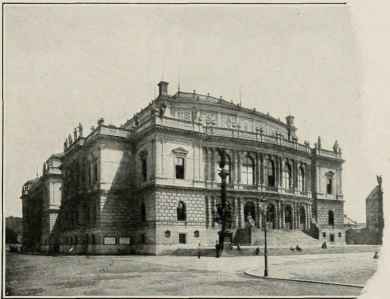- District: Stare Mesto, located on the river Vltava (Moldau)
- Address: Alsovo nabrezi No. 79/12 Prague
- City of Prague map Gustav Mahler
18-12-1903 Oskar Nedbal (1874-1930) conducted Gustav Mahler Symphony No. 2 here, played by the Czech Philharmonic Orchestra with Gabriela Horvátová (alto) and Bo?ena Durasová (soprano). Present: Alma Mahler (1879-1964) and her mother Anna Sofie Moll-Schindler-Bergen (1857-1938). See: Year 1903.
The construction of the Rudolfinum, a multi-purpose building whose concept was unique at the time, was initiated by Böhmische Sparkasse (?eská spo?itelna). Founded in 1825, this savings bank was the oldest financial institution in the Kingdom of Bohemia.
The prestigious building project bore witness not only to the financial strength and potential of Böhmische Sparkasse, but also to its self-confidence, sense of corporate social responsibility and belief in the supreme role of art. The new building was to be located on the right bank of the Vltava, just opposite the Prague Castle.
An early construction effort on the site had given rise to a riding hall; this was later replaced by a prison, which, in turn, gave way to a sawmill owned by the leading businessman Sir Vojt?ch Lanna. Now it seemed the site would finally be used for a truly outstanding purpose.
The architectural design by Josef Zítek and Josef Schulz
The jury, made up of leading architects of the day such as K. von Ferstel, T. von Hansen or F. von Schmidt, chose Zítek’s and Schulz’s project, even though contemporary opinions criticised it for having overly suppressed the required architectural unity of the building’s mass and outward appearance to clearly distinguish its two functionally differentiated parts: the concert premises and the gallery. The façade of the concert hall, with a rusticated elevated ground floor that is separated from the other floors by a string course, faces southwards to the present-day Jan Palach Square.
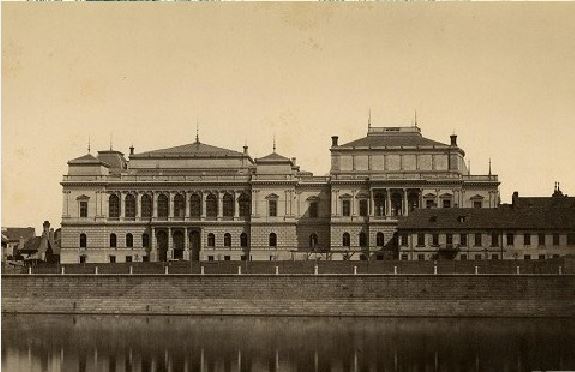
The façade is articulated by Ionic columns and topped by a balustrade decorated with vases and statues of famous musicians. The gallery part, with two monumental corner towers in its north façade, has the same decorative elements, which gives the building a unified visual appearance. The entrance in the west front, facing the Vltava embankment, leads to the impressive Ceremony Hall of the Rudolfinum, lined by 25 arches. The central ceremonial staircase leads up to the gallery rooms. Translucent ceilings ensure proper illumination of the collections.
Inauguration overshadowed by nationalist quarrels
The Rudolfinum was inaugurated on 07-02-1885, ten years after its construction started. Crown prince Rudolph was present at the opening ceremony, but the great event was nearly spoiled by nationalist quarrels (most of the guests present at the inauguration spoke German, there was only a handful of Czechs) and the missing decoration of the Ceremony Hall. Contemporary Czech press blamed it on the fact that too few Czech artists had been asked to contribute.
07-02-1885 Named in honour of Rudolf, Crown Prince of Austria, who presided over the opening.
Evoking the world of ancient Greece and Rome, Italian Renaissance and German music, the statues on the top of the building and other sculptures were also resented by the contemporary Czech society whose representatives would have preferred works commemorating leading Czech artists, or at least artists who had been born or worked in the Czech lands. In protest against the poor representation of national art, those Czech artists and craftsmen who did take part in decorating the building refused to finish their work.
The era of the Viennese waltz
After its opening the Rudolfinum became the seat of the Czech Philharmonic and also of what was probably the most important art association in the Czech lands – The Fine Arts Society (Krasoumná jednota) or, in German, Kunstverein für Böhmen. Another association that found a worthy home here was the Bohemian Society of the Patriotic Friends of Art. This organization, one of the oldest Czech associations of art lovers, brought to the Rudolfinum the picture gallery previously housed by the Czernin Palace in Hrad?any.
On Saturday 04-01-1896 the Rudolfinum witnessed the inaugural concert of the Czech Philharmonic which forever linked the orchestra’s beginnings with one of the most famous Czech composers. Antonin Dvorak (1841-1904) ascended the stage to conduct his own works: Slavonic Rhapsody No. 3 in A Flat Major, the world premiere of his Biblical songs No. 1 to 5, his Othello Overture and also the already world-famous Symphony No. 9 “From the New World”. The concert hall that saw the performance, now the home stage of the leading orchestra, Czech Philharmonic Orchestra, bears Dvo?ák’s name today.
04-01-1896 Inaugural concert of the Czech Philharmonic Orchestra with conductor Antonin Dvorak (1841-1904). And first concert of the Czech Philharmonic Orchestra.
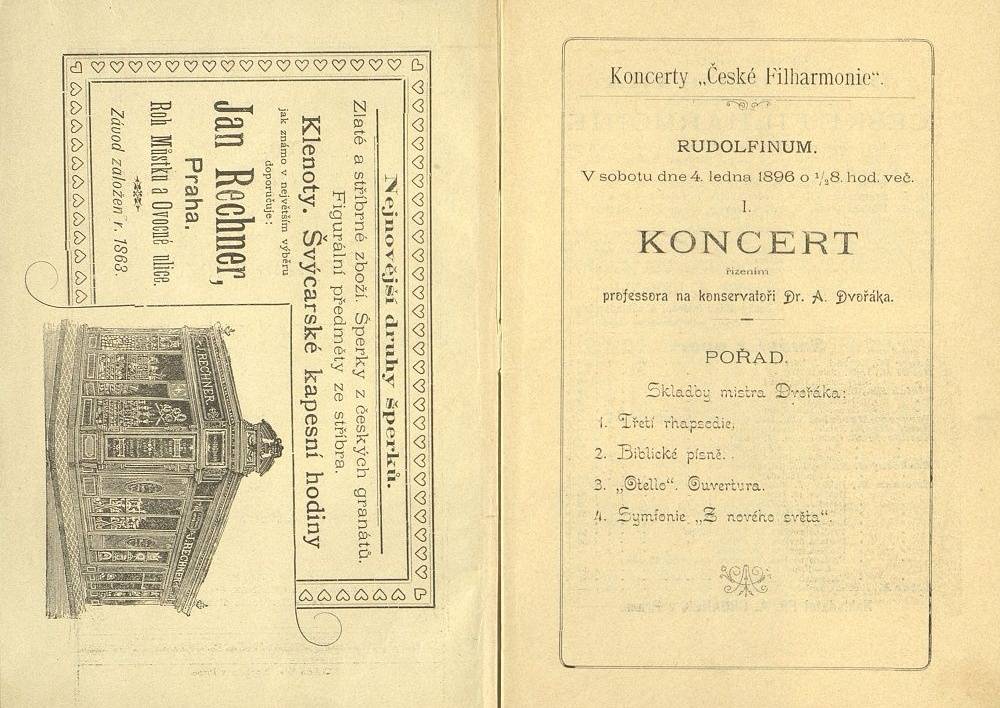
04-01-1896 Inaugural concert of the Czech Philharmonic Orchestra with conductor Antonin Dvorak (1841-1904) in the Rudolfinum.
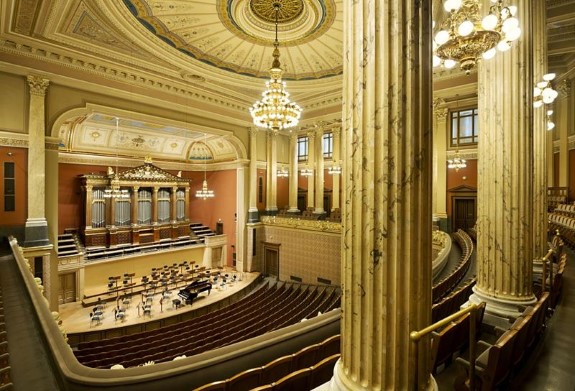
Rudolfinum. Antonin Dvorak (1841-1904) Hall.
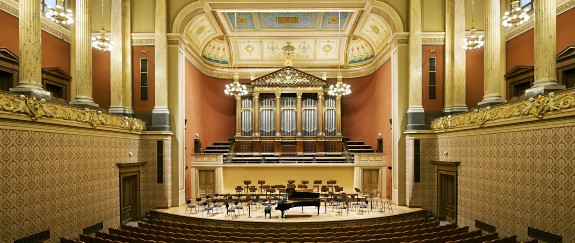
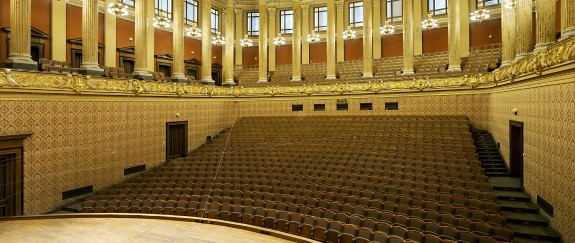
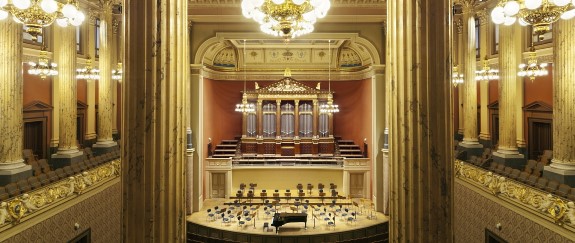
The Rudolfinum has been the home of the Czech Philharmonic Orchestra since 1946.

